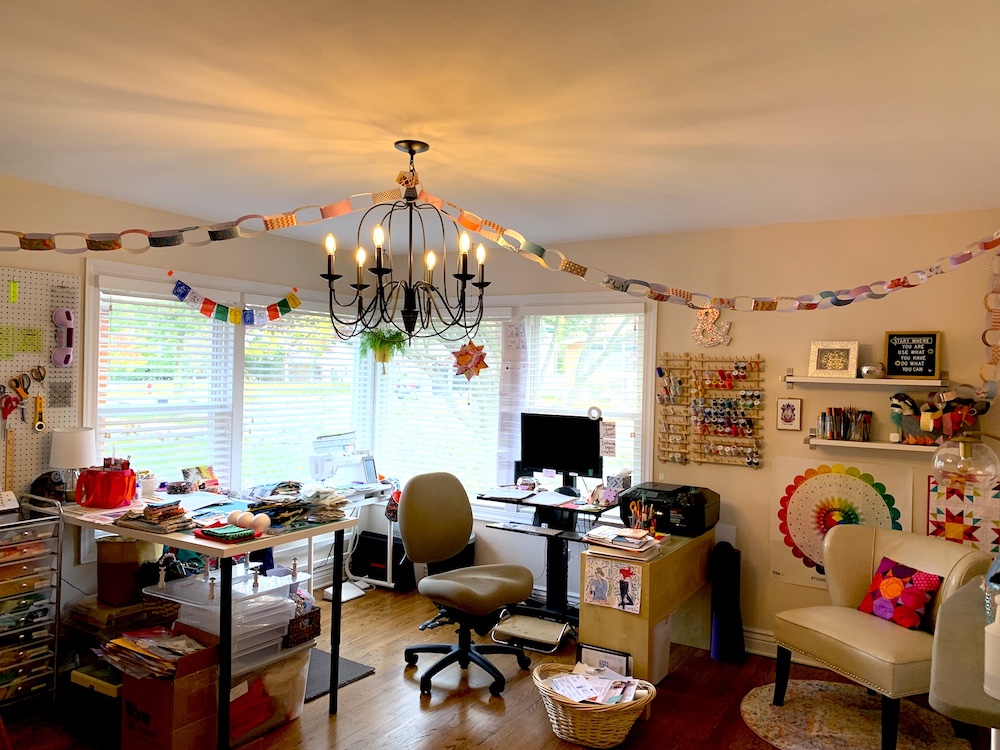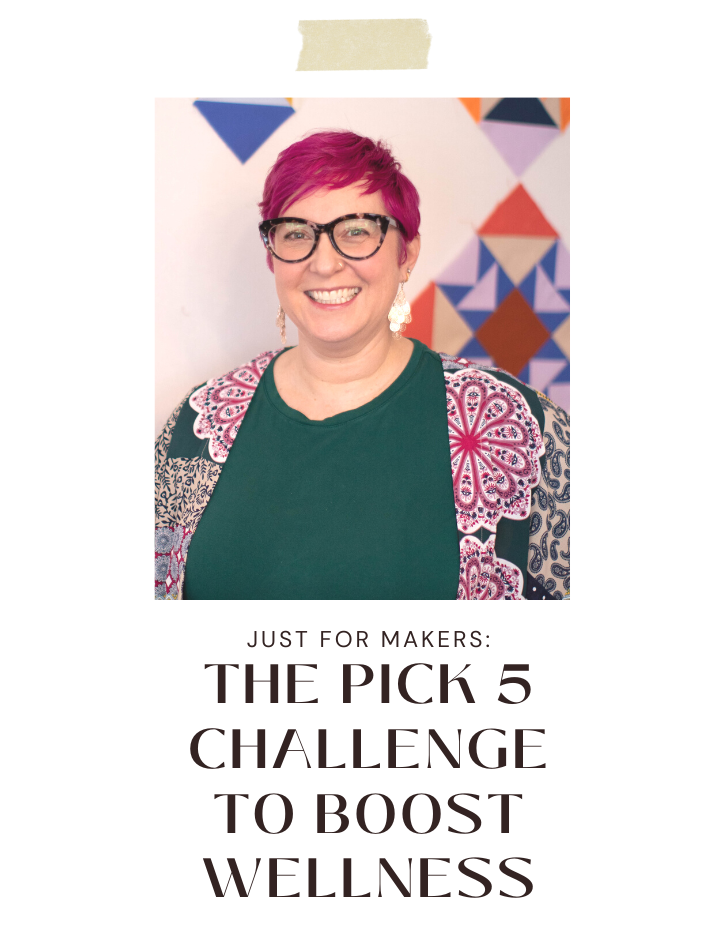If you’re considering developing a new offering, a focus group can give you tons of helpful information.
While it sounds a little corporate, you don’t need to be part of a corporate entity to run a focus group! In fact, if you’re a creative person considering starting a new company or big community project, a focus group is ideal. In this article, you’ll learn how to run a focus group.
What is a focus group?
A focus group is a research method that involves a small group of people (usually 5 to 10) who come together to discuss a specific topic, product or concept in a structured setting with a moderator.
The purpose of a focus group is to gather in-depth feedback, opinions, attitudes and perceptions from participants. Typically, a moderator guides the discussion, asking open-ended questions and encouraging participants to express their thoughts and ideas freely.
Focus groups are often conducted in a neutral location, but if you’re like me and run your business from your home, you can host them in your living room! The insights obtained from a focus group can help to refine and improve your products or services, develop marketing strategies, and gain a deeper understanding of people’s behavior and attitudes.
How I’ve used focus groups in my work:
You can learn a bit about how to run a focus group from my experience.
When I was developing the idea for my ChronicBabe project (a website and consulting/coaching service I ran from 2005 to 2021) I used three focus groups to:
Understand the health needs of my ideal client: women in their 20s to 40s with chronic health issues
Gauge participant reactions to a wide variety of names I was considering for the project
Learn how my ideal clients used email and social media (at the time, MySpace!) so I could use those tools successfully
Understand the concerns participants had about discussing their health online (no one was doing it back then)
And when I decided to become a wellness coach, I ran three focus groups in order to:
Gauge participants’ response to the concepts of creativity coaching and wellness coaching
Understand the needs of creative people when it comes to improving their creativity and health
Gain a better understanding of how my participants enjoy learning through online courses, newsletters, podcasts, etc.
Brainstorm ideas for names, titles, and project structures (a bit outside traditional focus group structure, but it was helpful for me)
Make a group craft to make sure they left feeling like they got to play a little (definitely not the norm in focus groups but hey… my group, my rules!)
In both cases, I enlisted people I trusted and knew, at least as acquaintances. This is also different from traditional focus group structure, in which participants generally aren’t known by the organizer.
Why did I do this? Because I was nervous about bringing strangers into my home – and I wanted to use the sessions to also rally support from my community of friends and colleagues.
As you can see, you don’t have to be super-formal with your process. In fact, you may want to make your focus group process more personalized to your style/brand/project. The more personable and vulnerable you are, the more comfortable your participants will feel as they offer feedback, which can sometimes be challenging.

Participants in my focus groups (when starting my wellness coaching business) created paper chains that included their wishes for me, their hopes for their own creativity, and their tips for staying creatively attuned.
Here are my 11 top tips for how to run a focus group:
Host as many or as few as makes sense for you. For my current business, I hosted three over two days, and I think it was too much all at once. It was hard to digest everything I learned. In the future, I think I would host only one per day, and have at least one day of space in between.
Host it at your own home, or a place where you feel comfortable getting vulnerable. You’re about to share your creative vision with others… you don’t need to be wondering if the space will work well, if the wifi works and so on.
Offer your participants options. By offering a daytime weekday, evening weekday, and afternoon weekend day, I gave my participants lots of options. I used a Google Form to collect their responses (I asked for RSVPs to make sure my groups all stayed manageable in size).
Only invite people whose opinions you value; do not invite people out of a sense of obligation. Definitely don’t invite someone who is tactless, as they might hurt you in a vulnerable moment, or insult your other participants. #awkward
Provide snacks and (non-alcoholic) beverages. Ask how you can accommodate folks with allergies.
Create an agenda for yourself. At each of my focus groups, I gave a 15-minute talk; asked for feedback for about 15 minutes; led the group in an exercise asking them to share ideas about what stifles creativity, and what helps creative flow; and we made a group craft. I wasn’t rigid about the timing, but I tried to keep those tasks in order and each group achieved them all.
Provide name tags to help facilitate group conversation. This is especially important if you invite folks from different parts of your community (which is a good idea – you’ll receive a wider variety of answers).
Start with an easy ice breaker. I asked folks to share the smallest creative act they had pursued so far that day; my example was that I arranged bell peppers (one of my snacks) in a specific color order on a tray. It’s so interesting to learn about your participants, and it helps relax them before you dive in.
Take notes. I love a big ol’ sticky note easel pad, because I can scribble all over it, and hang up the notes around my house to continue to process the results for days afterward.
Send a thank-you note. Across my three focus groups, we made a group craft that resulted in an adorable, colorful paper garland, which I used to decorate my studio. I sent everyone a follow-up note of thanks with a photo of my festooned studio so they could see the results, and an offer to support them when they reach a time of need. (I also offered to teach them how to run a focus group, should they ever want to.)
Breathe. Give yourself a few days to come down off the buzz of the event(s) and process what you learn. Follow up one-on-one with folks who seemed to want to go deeper. Keep saying thank you.
How will you use focus groups in your work?
Now that you’ve learned how to run a focus group, I’d love to know how you might use this tool in your own creative work. Jump into the comments below and fill me in. I would especially love to hear if you have feedback about my tips… or tips of your own!
My approach is more casual than conventional approaches to focus groups. If you’d like to see an alternate take, check out this information from the Community Tool Box.

